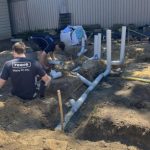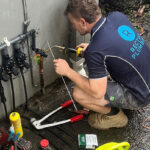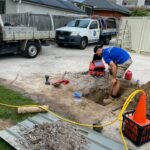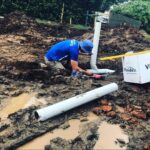- 16Feb
A Guide To Common Plumbing Problems And Solutions
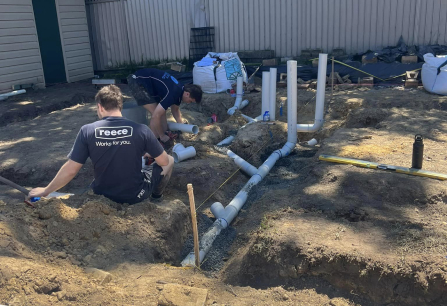
A Guide To Common Plumbing Problems And Solutions
Dealing with plumbing problems is just something that comes with being a homeowner, and it can feel overwhelming at times. Whether it's a small annoyance like a faucet that won't stop dripping or a bigger issue like a clogged drain or burst pipe, knowing how to handle common plumbing problems is essential for keeping your home in good shape and ensuring a comfortable living environment.
This comprehensive guide will look into common plumbing problems, what causes plumbing problems and how to solve plumbing problems.
What Causes Plumbing Problems?
Several factors contribute to common plumbing problems; understanding them is essential for preventing future plumbing issues. One of the main reasons for plumbing problems is when debris, grease, and foreign objects build up in the pipes. This can cause blockages over time, resulting in slow drains and possible backups. It's also important to note that outdated or poorly-installed plumbing systems are more likely to have leaks and other issues, so regular maintenance is crucial.Common Plumbing Problems and Solutions
Clogged Drains:
One of the most prevalent plumbing issues homeowners face is a clogged drain. A clogged drain in the kitchen sink, bathroom shower, or toilet can mess up your daily routine. But don't worry, there are a couple of things you can do to fix it. You may use a plunger or a drain snake to eliminate this blockage. And if you want to avoid future clogs, be mindful of what goes down the drain and use some drain guards to catch any debris.Leaky Faucets:
A faucet that drips doesn't just waste water; it can also cause your water bills to go up. Usually, you can solve a leaky faucet by replacing the worn-out washer or O-ring. If the problem continues, it might be a good idea to call a professional plumber who can check and fix any underlying issues.Running Toilets:
Having a toilet that keeps running is not just irritating. It can also lead to considerable water wastage. The main culprit behind this problem is usually a defective flapper, but don't worry, it's a simple fix. You can also try checking and adjusting the water level in the tank to solve this issue.Burst Pipes:
Burst pipes are a major plumbing problem that must be addressed immediately. When temperatures drop, water pressure builds up, or pipes get old, they can easily burst. If you encounter this issue, shut off the main water supply and contact a skilled plumber who can fix this burst pipe.General Tips On How To Solve Common Plumbing Problems
While some plumbing issues can be addressed through DIY solutions, others may require the expertise of a professional plumber. Here are some tips on how to solve common plumbing problems:DIY Repairs:
Ensure you have all the necessary plumbing tools like plungers, pipe wrenches, and drills to deal with small problems such as clogged drains and leaky faucets. You can find step-by-step instructions for common plumbing repairs in online tutorials and guides.Regular Maintenance:
To steer clear of plumbing problems, it's important to take preventive measures. Schedule regular maintenance checks to examine pipes, faucets, and appliances for any signs of damage or possible issues.Professional Assistance:
If you're dealing with complicated plumbing issues such as burst pipes, major leaks, or problems with the main water line, it's best to contact a professional plumber like Rectify Plumbing for assistance. Skilled plumbers have the expertise and equipment to quickly identify and resolve intricate plumbing problems.The Bottom Line
Taking care of typical plumbing issues is crucial in a home. By understanding the reasons and remedies for problems like blocked drains, dripping taps, and burst pipes, you can be proactive in preserving a smoothly-running plumbing system. Whether you decide to handle small repairs on your own or hire experts for more complicated issues, staying knowledgeable is essential for keeping your home's plumbing infrastructure in good shape for the long run.Related Articles
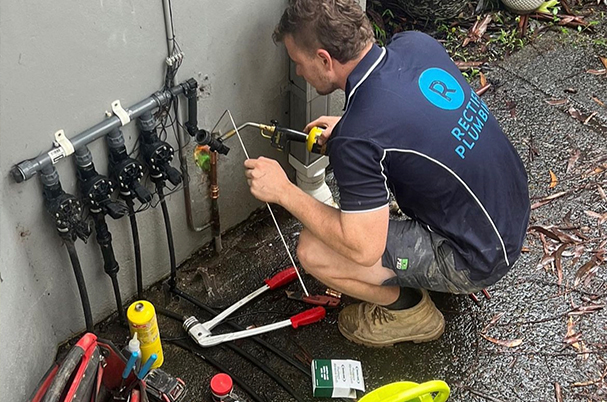
13Feb
Comprehensive Plumbing Inspection And Maintenance Plan
How Having a Comprehensive Plumbing Inspection & Maintenance Plan Can Help You In The Long Run
Your household's plumbing system is often underappreciated, but it plays a crucial role in providing clean water and managing wastewater. Sadly, many homeowners neglect the importance of maintaining their plumbing until a big problem occurs. That's why it's essential to have a thorough plumbing inspection and maintenance plan to keep your system in excellent shape. In this blog post, we'll delve into why regular plumbing inspections and maintenance are essential, their advantages, and the key elements of a plumbing maintenance plan.The Importance of Plumbing Inspections
Getting your plumbing inspected regularly is like taking preventive measures for your home. Just like you go to the doctor for routine checkups to catch any health problems before they worsen, a plumbing inspection lets experts identify and fix them early on. This proactive approach helps you avoid expensive repairs and disruptions to your everyday life. A plumbing inspection involves thoroughly examining your entire plumbing system, including pipes, fixtures, and appliances. It assists in identifying leaks, corrosion, blockages, and other problems hiding beneath the surface. Neglecting these issues can result in more extensive damage over time, like water damage to your property and mould and mildew development.The Benefits of Regular Plumbing Maintenance
Preventing Emergencies:
A comprehensive plumbing maintenance plan offers many advantages, one of which is the ability to prevent emergencies. By detecting and resolving potential problems during regular inspections, you can steer clear of sudden and unexpected plumbing disasters.Extending the Lifespan of Your Plumbing System:
Your plumbing, like any other system, gets older as time goes on. But don't worry! By regularly maintaining it, you can greatly increase the lifespan of your plumbing components. This means you won't have to replace pipes, fixtures, or appliances before their time.Saving Money in the Long Run:
Investing in a plumbing maintenance plan might seem like an additional expense, but it can actually save you money in the long run. By addressing minor issues before they become big Now that we grasp the significance of regular plumbing inspection and upkeep, let's explore the key elements of a thorough plumbing maintenance plan:Scheduled Inspections:
Create a consistent routine for getting professional plumbing inspections. Whether it's once a year or twice a year, having a regular plan in place guarantees that any possible problems won't be missed.Thorough Plumbing Inspection Checklist:
Work with your plumber to create a detailed plumbing inspection checklist that covers all aspects of your plumbing system. This may include checking for leaks, inspecting water pressure, examining the condition of pipes, and assessing the functionality of fixtures and appliances.Routine Cleaning and Maintenance:
Regularly clean drains, remove mineral deposits from faucets and showerheads, and inspect water heaters for sediment buildup. These routine maintenance tasks contribute to the overall health and efficiency of your plumbing system.Addressing Repairs Promptly:
If any issues are identified during an inspection, it's crucial to address them promptly. Whether it's fixing a small leak, replacing a worn-out washer, or repairing a faulty valve, addressing problems early prevents them from worsening.Conclusion
To sum up, it's important to have a thorough plumbing inspection and maintenance plan in place to keep your home's plumbing system running smoothly and efficiently. You can prevent unexpected emergencies and expensive repairs by making regular checkups a priority, dealing with problems promptly, and sticking to a solid maintenance routine. Remember that investing in preventive plumbing care now will save you lots of time, money, and stress down the road. So go ahead and book that plumbing inspection - you'll be glad you did!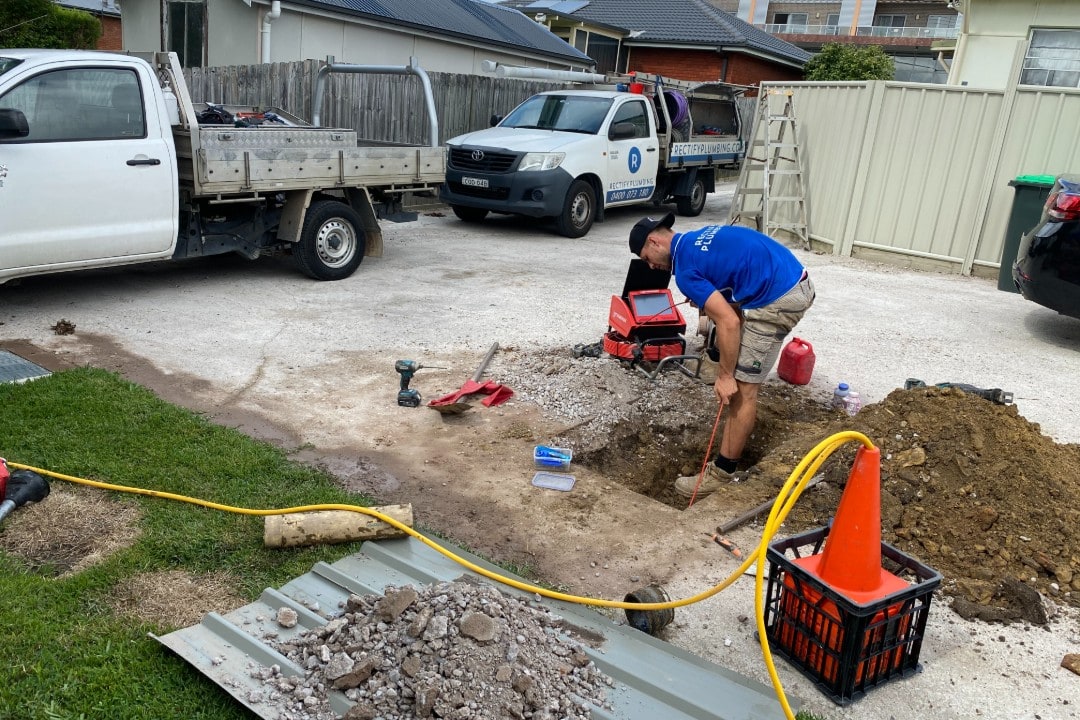
10Feb
Handy Ways On How To Clear Blocked Drains
Blocked drains can be a nuisance, causing inconvenience, bad odours and potential damage if left unattended. Knowing how to clear blocked drains is a valuable skill that can save you time and money. In this guide, Rectify Plumbing experts explore effective methods for clearing drain blockages and provide invaluable plumbing tips for drain unblocking. We are experts when it comes to clearing drainages.
Common Causes of Drain Blockage
Understanding the common causes of drain blockage is essential for preventing future issues. Hair, soap scum, grease, food particles, and foreign objects are frequent culprits. Tree roots invading underground pipes can also lead to drainage problems. Identifying the common causes of drain blockage can help you choose the most appropriate methods for clearing blocked drains.Methods for Clearing Blocked Drains
As we all know, there are many methods for clearing blocked drains. Let's learn how to clean drain blockages properly:Plunger Power:
A plunger is a simple yet powerful tool for clearing minor drain blockages. Create a tight seal around the drain and plunge vigorously to dislodge the obstruction.Boiling Water:
Pouring boiling water down the drain can melt grease and break down soap scum. This method is effective for mild blockages.Baking Soda and Vinegar:
Combine baking soda and vinegar to create a natural, foaming reaction that can break down debris. Follow up with hot water to flush out the loosened particles.Wire Hanger or Drain Snake:
Straighten a wire hanger or use a drain snake to physically remove blockages. This is particularly useful for hair or debris that may be out of reach for plunging.Chemical Drain Cleaners (Caution):
Chemical drain cleaners can be effective, but use them with caution. Follow the product instructions carefully and wear protective gear.Enzyme-Based Cleaners:
Enzyme-based drain cleaners contain natural bacteria and enzymes that break down organic matter. These cleaners are eco-friendly and can be used as a preventive measure to maintain clear drains.Wet and Dry Vacuum:
Use a wet and dry vacuum to suck out the blockage from the drain. Ensure a tight seal and switch the vacuum to the liquid setting.Salt and Baking Soda:
Add baking soda and salt in equal amounts, then dump the mixture over the drain. Before using hot water to flush it, let it remain for a few hours or overnight.Plumbing Snake Auger:
A plumbing snake auger is a more advanced tool for serious blockages. It can navigate through pipes to reach and remove stubborn clogs.Plumbing Tips To Unblock Drains
Here's how to fix a blocked drain:Regular Maintenance:
Prevent blockages by adopting regular drain maintenance or you can take preventive maintenance service from an expert provider. Flush drains with hot water periodically to prevent buildup.Mesh Screens:
Install mesh screens over drains to catch hair and debris before they enter the pipes. Clean the screens regularly.Proper Disposal:
Dispose of grease and food remnants properly rather than washing them down the drain. Use a strainer in the kitchen sink to catch larger particles.Check External Drains:
External drains can also be prone to blockages caused by leaves, debris, and dirt. Regularly inspect and clean gutters and outdoor drains to prevent water backup.DIY Drain Cleaning Solutions:
Combine eco-friendly ingredients like lemon juice and salt to create a natural cleaning solution. This can help prevent unpleasant odours and maintain a clean drain.Avoid Harsh Chemicals:
While chemical drain cleaners can be effective, they may also damage pipes over time. Consider using them sparingly and opt for alternative methods when possible.Some Bonus Tips To Fix Clogged Drains
Looking for more plumbing tips for drain unblocking? See below to learn more ways how to fix a blocked drain:Professional Inspections through cameras:
If you experience recurrent drain issues, consider a professional camera inspection of your plumbing system. This can identify underlying problems such as pipe damage or tree root intrusion.Trenchless Pipe Repairs:
Trenchless pipe repair methods, like pipe lining or pipe bursting, can address more significant pipe issues without extensive excavation. They offer a faster and less disruptive solution.Professional Plumbing Services:
If you are looking for clogged drain solutions for persistent or severe blockages, it's advisable to seek professional plumbing services. Plumbers have specialised tools and expertise to tackle complex drainage issues.Hydro-Jetting:
Hydro-jetting involves using high-pressure water to clear out blockages and debris. It's a powerful and efficient method for clearing even the toughest drainage clogs.The Bottom Line
Clearing blocked drains is a task that can often be tackled with DIY methods, but it's crucial to approach drainage clearing with care and use the appropriate tools and techniques. Regular maintenance and preventive measures can go a long way in avoiding the inconvenience of blocked drains. By following the handy tips and methods outlined in our expert guide in clearing drain blockages, you can keep your drains flowing smoothly and maintain a healthy plumbing system in your home. Remember, proactive care is the key to a hassle-free and efficient drainage system.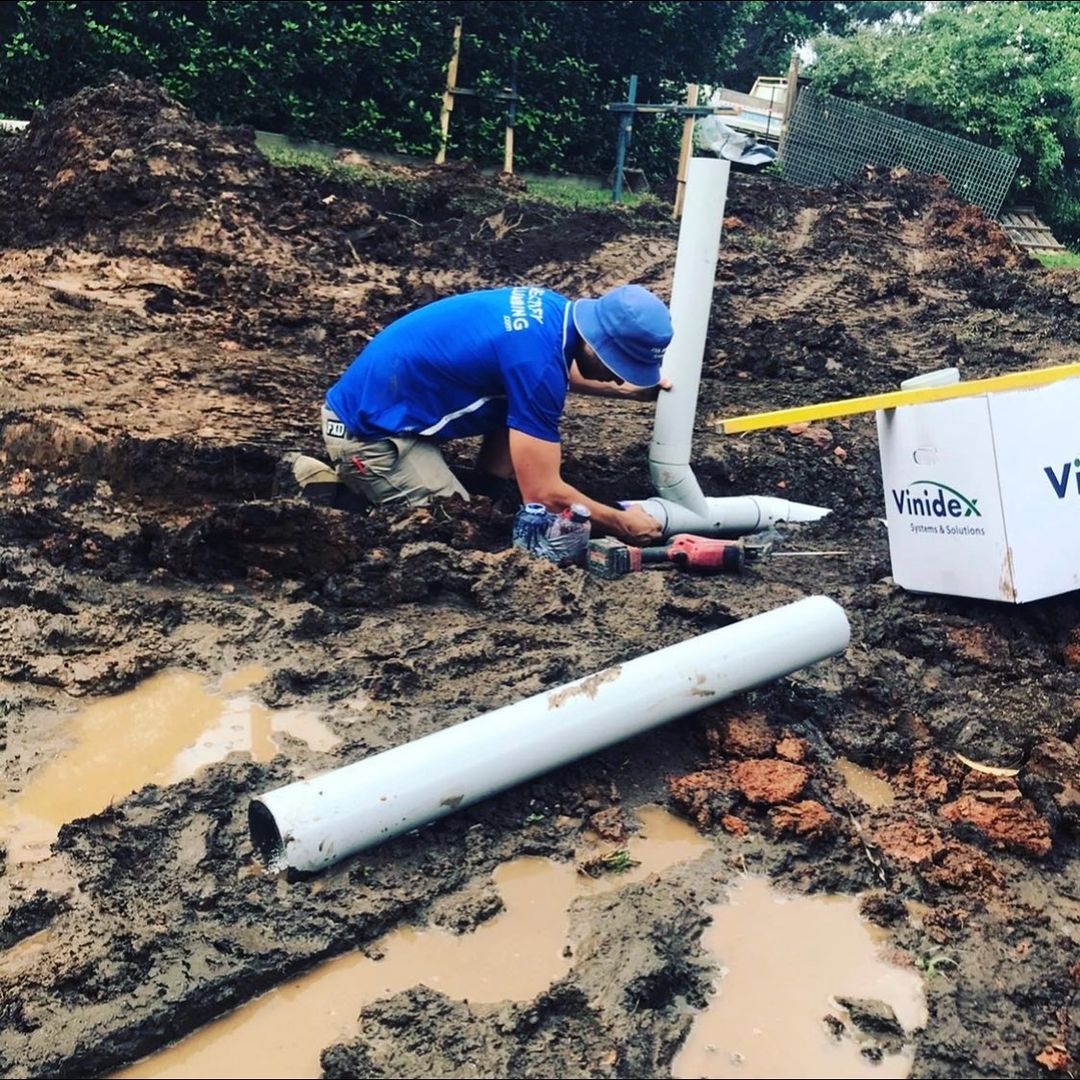
07Feb
How To Safely Unblock An External Drain
A blocked external drain can quickly become a messy and inconvenient problem for homeowners. Whether due to debris, leaves, or a buildup of foreign objects, tackling a blocked drain outside your house requires a systematic approach to prevent a disaster. In this step-by-step guide, we'll explore how to unblock external drains safely and effectively to prevent any potential damage or inconvenience. Rectify Plumbing is a leader in unblocking outdoor drains so read on.

